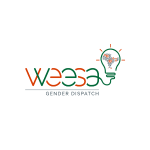

Women’s Economic Empowerment in South Asia (Hosted by SAR GIL)
Tags
- Gender-based Violence (17)
- Water (17)
- Measurement (10)
- Leadership (19)
- Afghanistan (4)
- Social Norms (9)
- Infographics (9)
- Migration (14)
- Transportation (12)
- Green Transition (7)
- Brief (2)
- Empowerment (5)
- Toolkits (13)
- Pakistan (23)
- Energy (26)
- Jobs (43)
- Infrastructure (20)
- Self-help Groups (12)
- Agriculture (12)
- Social Protection (12)
- Digital Inclusion (19)
- Nepal (12)
- Private Sector (27)
- Care Economy (10)
- Bhutan (2)
- Sri Lanka (6)
- Blogs & Articles (34)
- Podcast (33)
- Reports (70)
- India (30)
- Assets and Resources (14)
- Bangladesh (24)
- Maldives (1)
- Climate Change (32)
- Entrepreneurship (31)
- Video (2)
- Financial Inclusion (24)
- Policies and Legislation (14)
- Male Engagement (7)
- Gender Budgeting (7)
- Education and Skills (23)
Archives
- 2023 September (55)
- 2023 October (30)
- 2023 November (20)
- 2023 December (1)
- 2024 January (14)
- 2024 February (14)
- 2024 March (11)
- 2024 April (13)
- 2024 May (93)
- 2024 June (2)
- 2024 July (12)
- 2024 August (16)
- 2024 September (12)
- 2024 October (16)
- 2024 November (27)
- 2024 December (5)
- 2025 January (12)
- 2025 February (18)
- 2025 March (19)
- 2025 April (8)
- 2025 May (12)
- 2025 June (2)

Documents
Raising Female Employment in South Asia, One Step at a Time (2025)
With more than 400 million working-age women outside the labor force, South Asia has a significant loss of economic output. This blog details insights from a 2024 conference focused on policies to boost women’s
The Productivity of Women- and Men-led Enterprises: In Search of a Fair Comparison (2025)
Comparisons between women- and men-led firms often assume they operate under similar conditions and constraints – a flawed assumption. This blog summarizes findings from a meta-frontier analysis that separates environmental constraints (factors
When Does Exporting Increase Women’s Employment in The Developing World? (2024)
This blog highlights key findings from a 2023 study that aims to uncover the intricate channels through which exports impact women’s employment. Analyzing data from nearly 30,000 manufacturing firms across 141 emerging economies,
Accelerating Impact: Unleashing the Power of Private Sector Partnerships for Gender Equality (2024)
This blog recaps insights on advancing gender equality in the private sector from panelists representing the public and private sectors, international organizations, and civil society at the 2024 World Bank Group-IMF
What it Means to Be a Girl or Woman When Water is Scarce (2024)
Climate change is driving a water crisis that disproportionately impacts women and girls. This blog highlights findings from the latest UN World Water Development Report and other studies, revealing the scale of the crisis.
Investing in Women: A Game-Changer in Climate-Resilient Irrigation (2024)
This blog highlights the benefits of closing gender gaps in irrigation, emphasizing how women's participation boosts agricultural productivity and income, nutrition, and human capital for families and communities. Drawing on global
Women’s Collectives as Champions of Climate Smart Agriculture and Water Resilience (2024)
Collective action among women can enhance water efficiency, promote conservation and ensure equitable access to water. This blog outlines women’s collectives’ role in advancing climate-smart agriculture and water resilience, particularly in regions
More and better jobs: Unlocking the potential of South Asia’s women (2025)
This blog highlights how the World Bank and its partners are investing in programs across South Asia to expand women’s employment opportunities, including skills training in India, safer public transport in
Empowering Women Through Digital and Financial Inclusion
In today’s digital age, access to technology and financial services is more than just a convenience—it is a necessity. Yet, millions of women around the world remain disconnected from the
Empowering Women in Zanzibar's Energy Sector: A Journey of Transformation to Bridge the Gender Gap (2024)
This blog details the success of the Zanzibar Energy Sector Transformation and Access (ZESTA) Project's Internship Program in creating a pipeline of female STEM graduates for technical roles in the energy